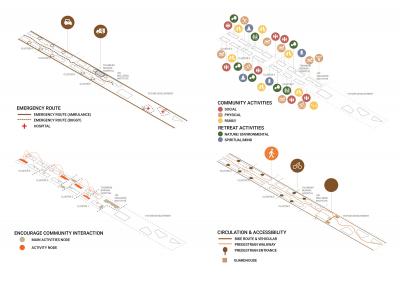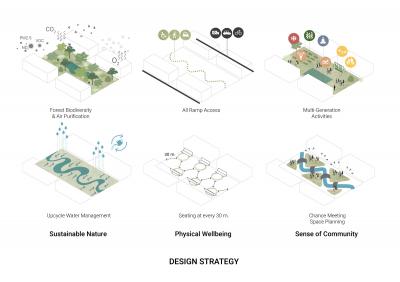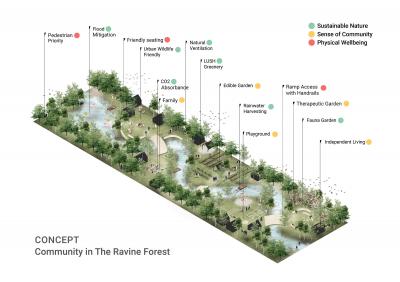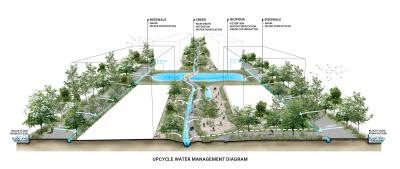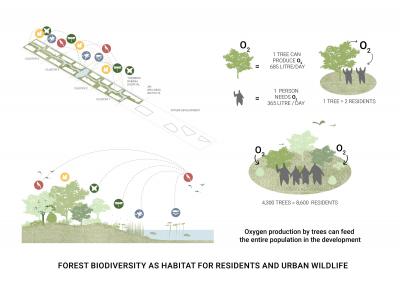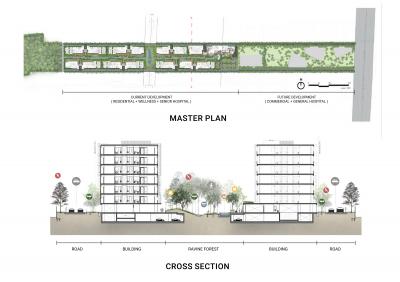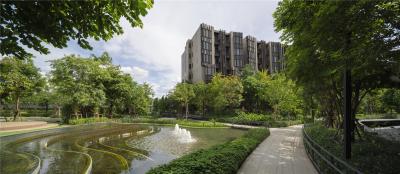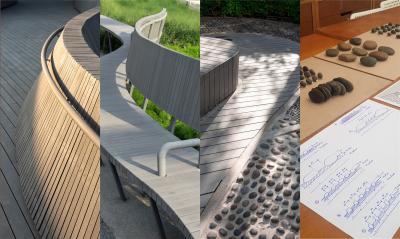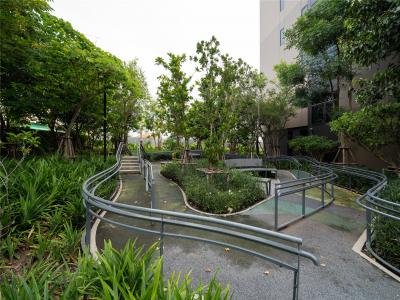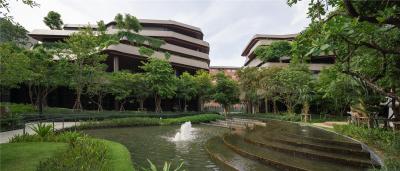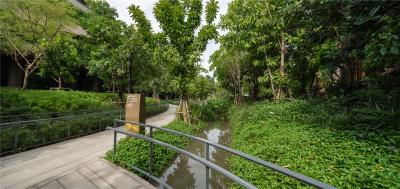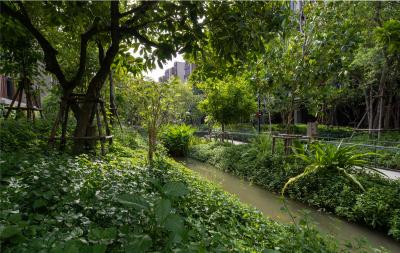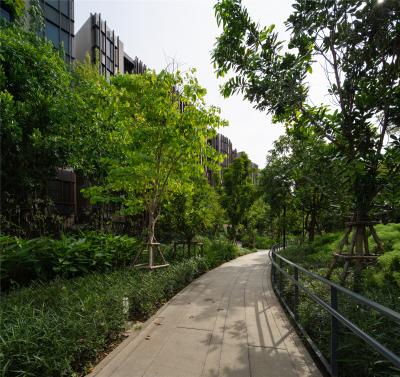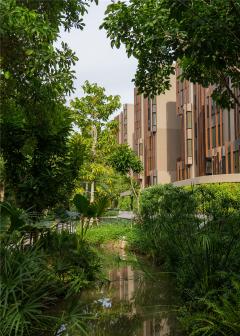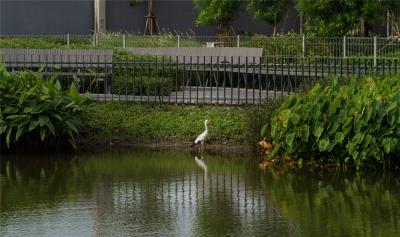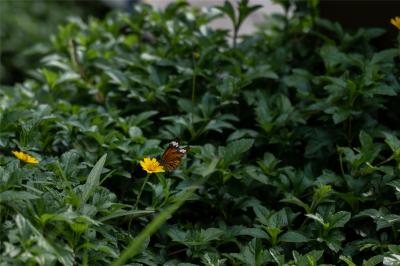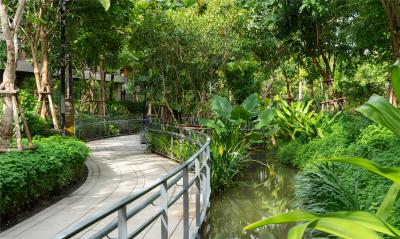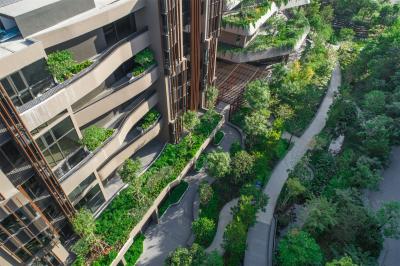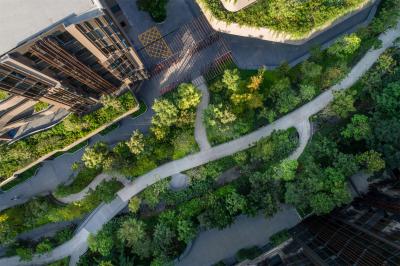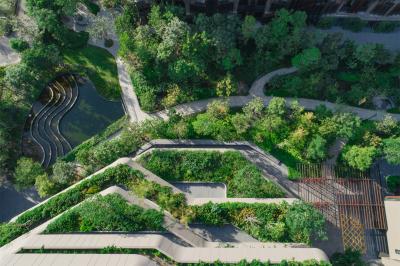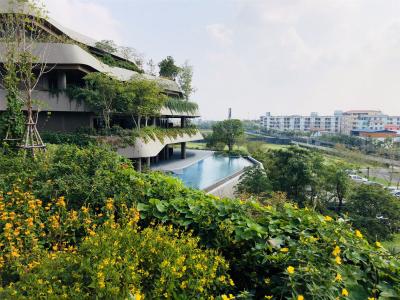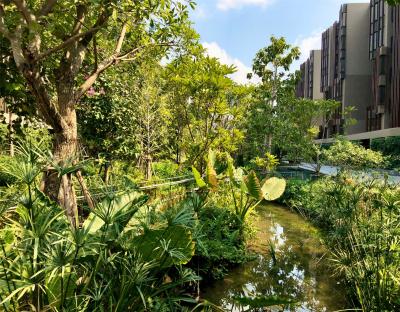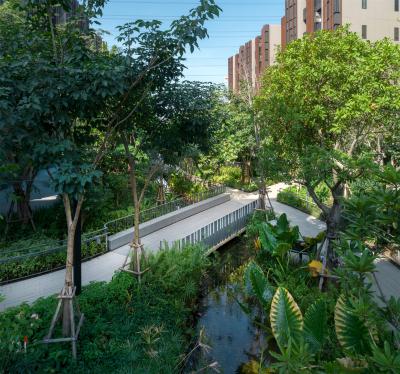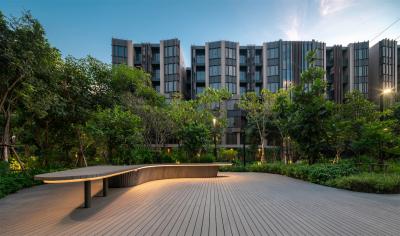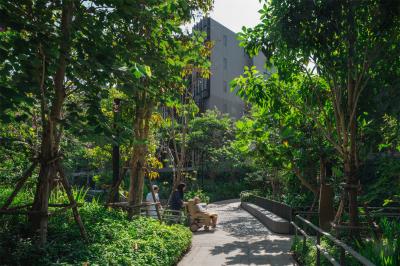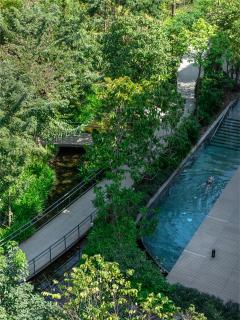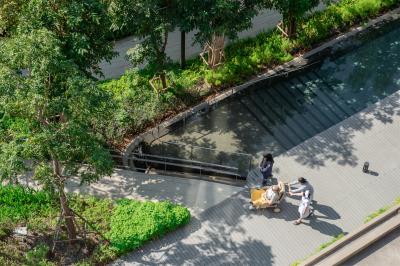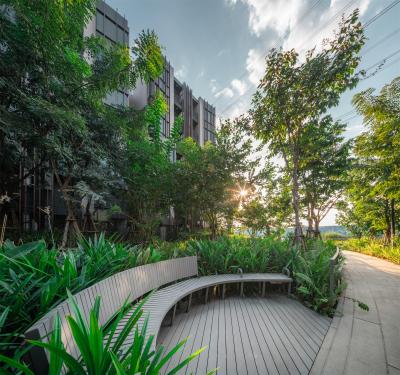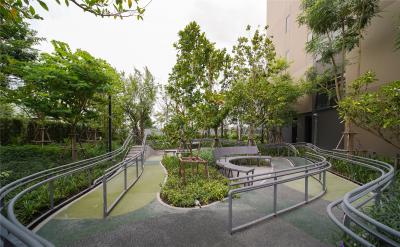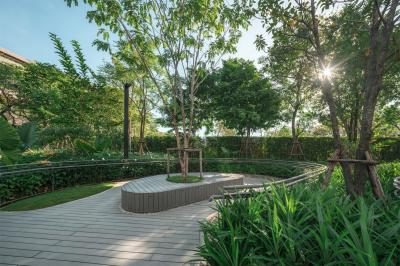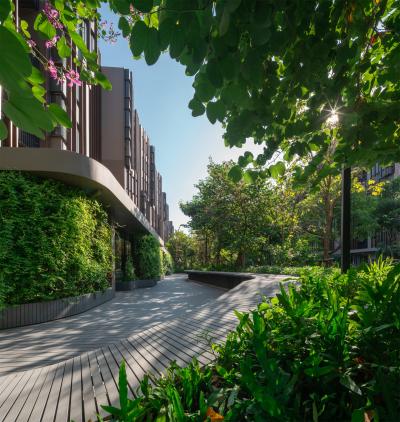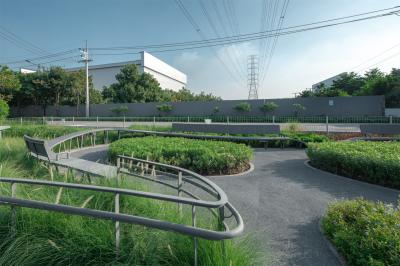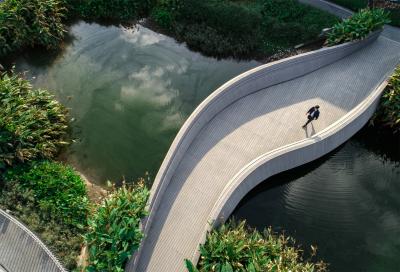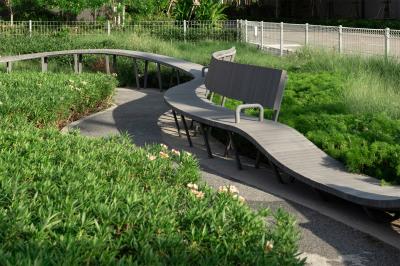泰国金钥匙幸福小镇养老社区景观设计 | shma
-
项目名称:Jin Wellbeing County
-
项目地点:泰国巴吞他尼府Rangsit市
-
项目规模:58,332平方米(第一阶段)
-
设计公司:
-
委托方:Thonburi Healthcare Group
-
建成时间:2020
-
图片来源:Panoramic Studio, Napon Jaturapuchapornpong
目前在全球部分地区,年龄超过60岁的人口数量达到总人口的20%以上,人口老龄化现象显著,我们必须重新思考城市建设如何为退休人士带来充实的生活。
“金钥匙幸福小镇”探索未来社区的新形式,是泰国首个融合了住宅、商业和医院等功能的养老综合开发项目。小镇规划从老年人的需求出发,制定了三项基本原则:生态可持续、健康体魄和社区意识。项目围绕“休养”、“融入”和“创造”等概念设计了多样化的活动,提升了居住体验。项目初始阶段,我们对“健康七维度”进行了研究,提出了优化老年生活的方法,并将其融入景观设计中,真正实现“山谷雨林社区”的设计理念。
As many parts of the world are becoming an aging society - where more than 20% of the population are older than 60 years old, we need to rethink how we build our city for everyone to live meaningfully after retirement.
Seeking a new typology of future communities, ‘Jin Wellbeing County’ has become the first senior oriented mixed-use development in Thailand comprising residence, commercial unit, and hospital. Its planning focuses on 3 principles - ‘Sustainable Nature’, ‘Physical Wellbeing’, and ‘Sense of Community’, responding to seniors’ needs. Diverse activity dynamics are designed through ‘Retreat’, ‘Engage’ and ‘Create’ concepts which enhance all-round living experience. Together with our initial research on “The Seven Dimensions of Wellness,” marking beneficial approaches for aging life, all aspects are embedded in the landscape design to truly achieve “Community in the Ravine Forest.”
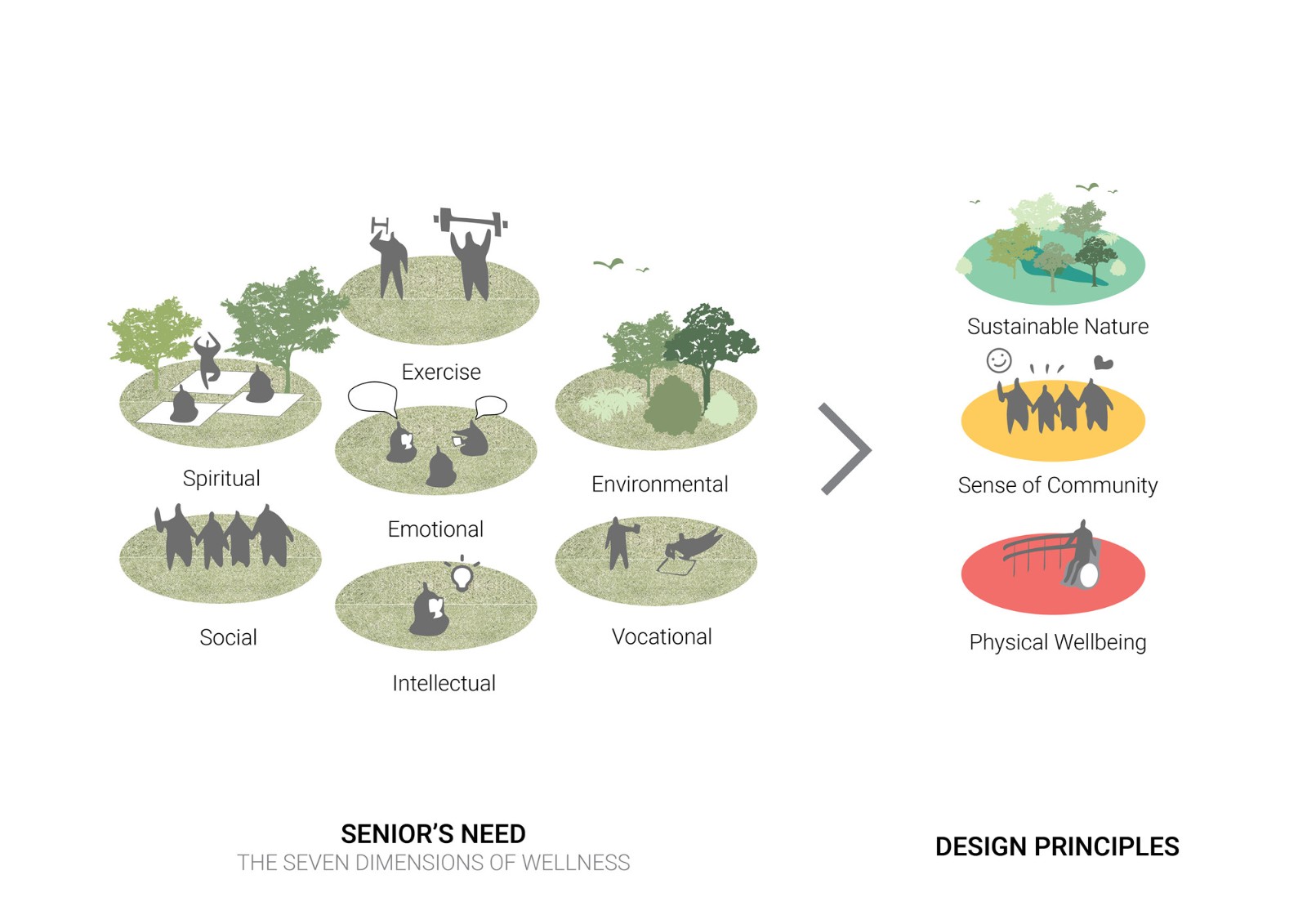
▲设计原则 Design Principle
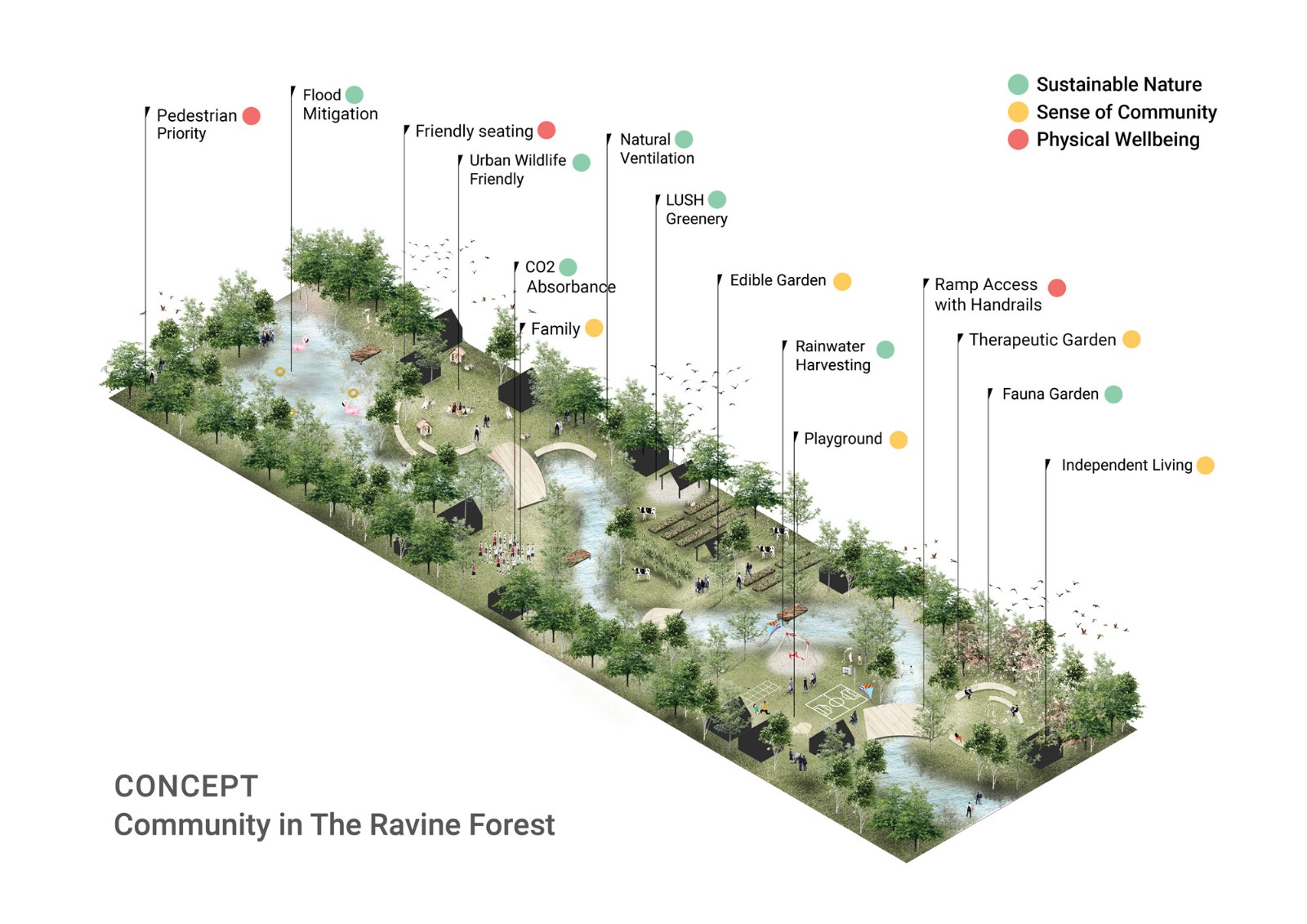
▲设计理念:山谷雨林社区 Concept: Community in the ravine forest
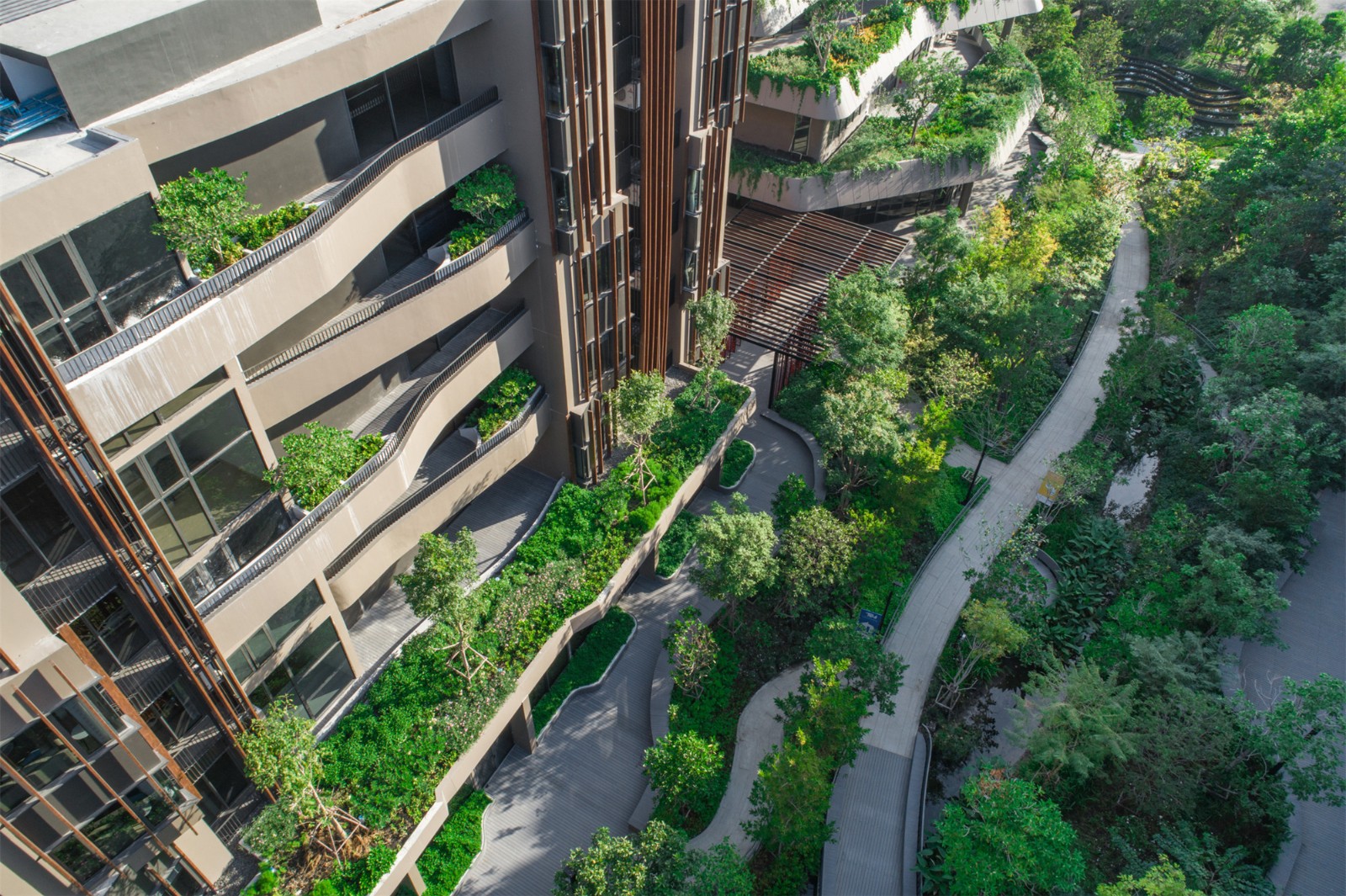

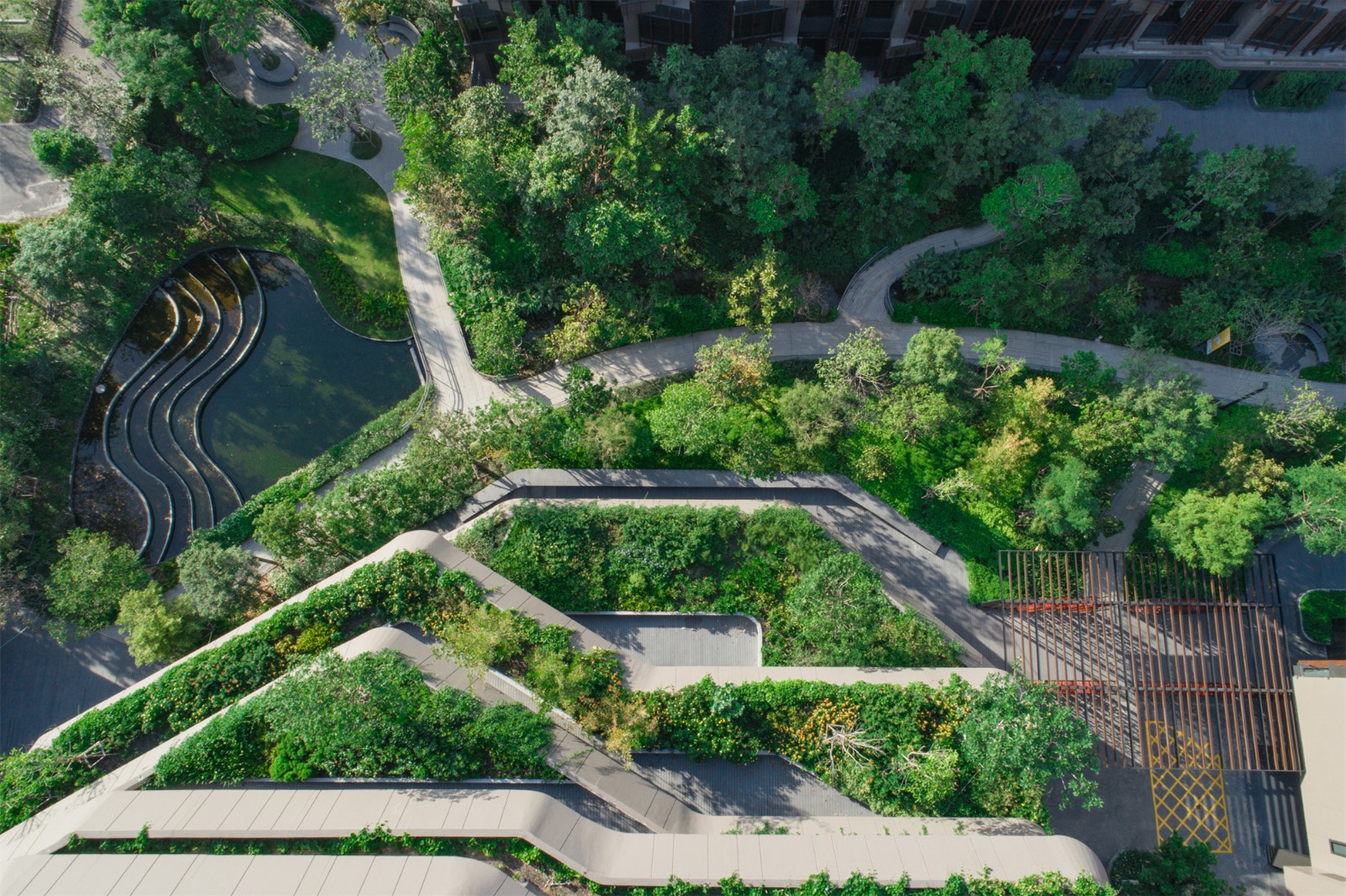
▲山谷雨林鸟瞰图 Aerial view of the ravine forest
金钥匙幸福小镇位于曼谷郊区巴吞他尼府的湄南河冲积平原上,过去以低地农田为主,常发生季节性洪水。然而随着城市化的发展,该区域逐渐被成排的建筑、房屋和基础设施所占据,有发生严重洪涝灾害的隐患。由于水流受阻,曼谷以及市郊地区已遭受了如2011年泰国洪水和雨季暴洪等严重灾害。因此,设计师充分考虑了公共空间和周边环境的需要,除了传统的填埋方法外,还使用了圩田系统,在雨水进入公共排洪设施之前截留部分雨水。这种方法如能在城市中广泛使用,或将有助于控制雨洪,提高城市韧性。
Located in the Chao Phraya Flood Plain, the site of Jin Wellbeing County in Pathum Thani, the suburb of Bangkok, is previously known for agricultural lowland, which gets flooded seasonally. Nonetheless, as time passed by, the area gradually became urbanized by rows of buildings, housings, and infrastructure, leaving the possibility of severe flooding. By blocking the flow of water, Bangkok and its suburbs have faced critical phenomena such as 2011 Thailand Floods and regular flash floods during the rainy season. As a result, Jin Wellbeing County is designed thoughtfully with a consideration to the public and surrounding site, by adopting “Polder System,” which helps retain water before releasing to public amenity, apart from doing typical landfill methods. This approach potentially helps maintain flood in urban areas, leading to a resilient living, if used in every site around the city.
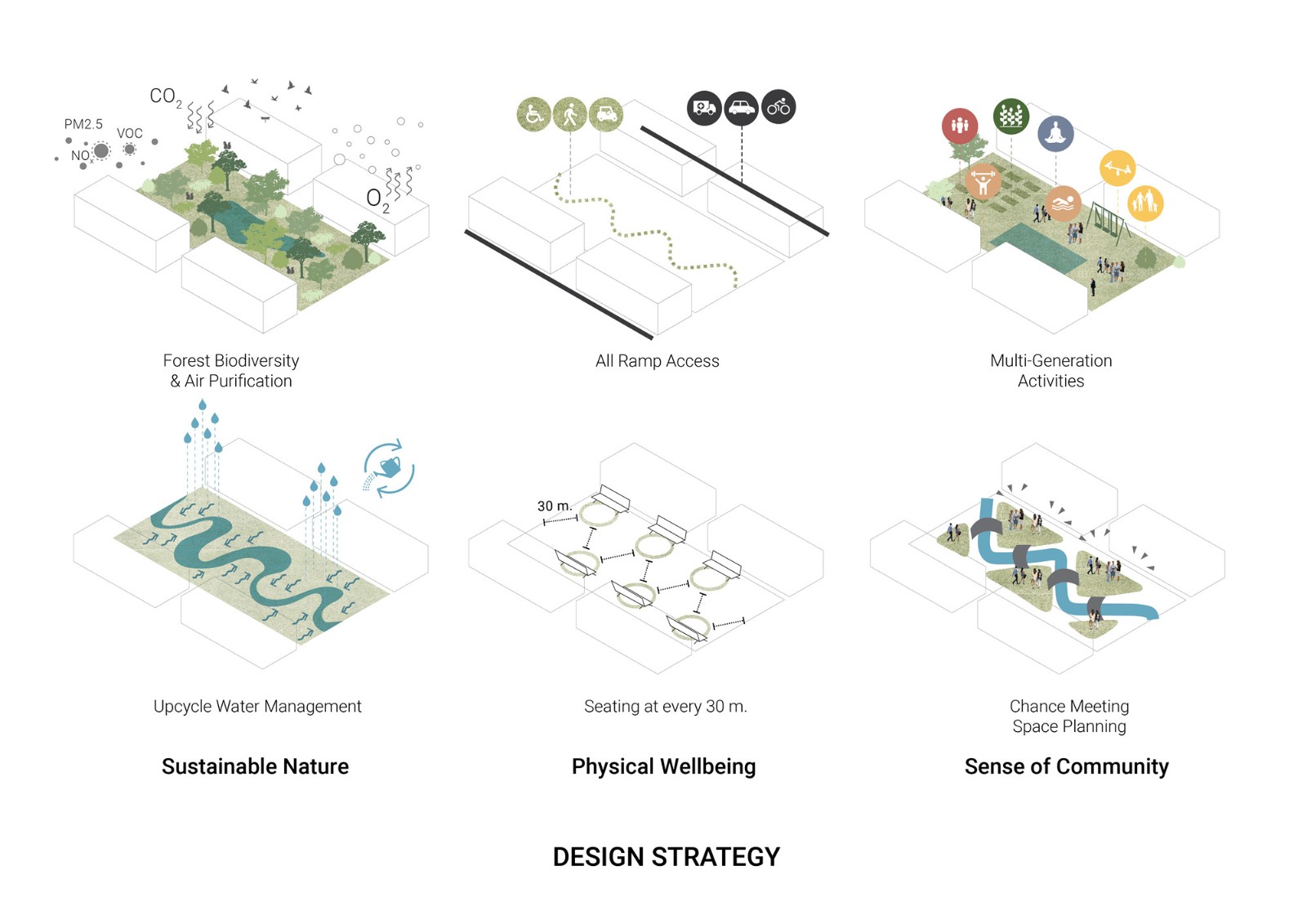
▲设计策略 From Principle to Design Strategy

▲场地图解 Site Diagram
小镇的全阶段总体规划中设计了多种混合用途设施,目前已建成58332平方米的一期项目,其中包括金钥匙幸福研究中心、Thonburi Burana医院,以及1号和2号低层住宅群。项目设计了22485平方米的地面及屋顶绿化空间,占场地面积的40%,远超30%的设计标准。
Despite the full-phase masterplan with all mixed use facilities, the project is now completed within 58,332 square meters of Phase I which comprises Jin Wellness Institute and Thonburi Burana Hospital and Low-rise Residential Cluster 1 and 2. The project exclusively offers 22,485 square meters of green spaces - both on-ground and on-structure, which equals to 40% of the site area, exceeding the 30% standard requirement.

▲总体规划与剖面图 Masterplan and Section
生态可持续
Sustainable Nature
与自然和谐共生有益于人们的身心健康。设计师选择了不同高度、形态和花色的植物进行搭配,包括多年生植物、滨海乔木和地被植物等。为了还原森林的植被特征,设计师用自然的混合种植手法搭配植物,而不是行列式种植。这将触发自然的“生态演替”过程,不同植物共同生长,随着时间的推移自然淘汰不适合的物种,形成稳定的群落。
A perfect harmony with nature will surely enhance people’s physical and mental health. Plants selection varies in heights, forms and flower colors, including Perennials, Shoreline Trees, Groundcover plants. To imitate a forest, they are arranged all over softscape areas by mixing up, rather than in an orderly composition. They can trigger the ‘ecological succession’ process, allowing every species to grow mutually and substitute the older ones naturally over time.
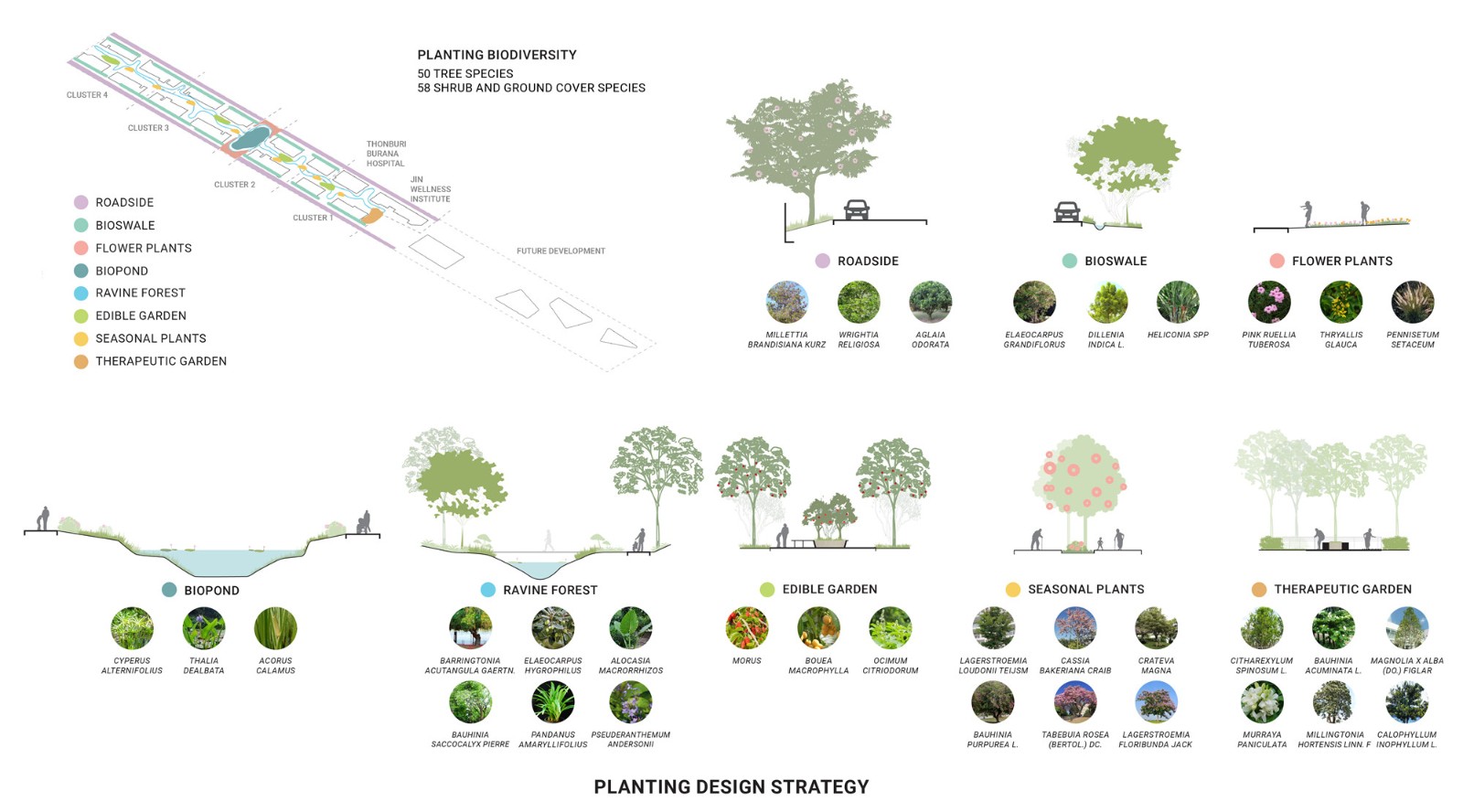
▲植物配植策略 Planting Design Strategy


▲溪流两侧丰茂的植被 Lush Creek within the landscape
水管理系统在雨季控制洪水,旱季则可以供水。在场地中央的“溪流”是主要的排水和水处理系统,与“生态沼泽”一起收集雨水径流。经过净化的水将汇集在“生态池”中进行储存,或进行下一步处理,可作为场地内植物的灌溉用水。这种韧性的生态系统为鸟类、水生动物、昆虫和松鼠等“城市野生动物”提供了食物和生境,有助于维护生物多样性,甚至促进与周边地区生态系统的交流。
Water management system functions in handling flooding on wet seasons and supplying adequate water on dry seasons. ‘Creek’ is proposed through the middle of the site as a main drainage and treatment system, along with ‘Bioswale,’ gathering runoff water from the outer part. Primarily purified water will flow along the way into ‘Biopond,’ used for retention and secondary treatment. It, therefore, provides reused water for irrigation and keeps the project green all year. This resilient ecosystem essentially becomes food sources and habitats for ‘urban wildlife’ such as birds, aquatic animals, insects and squirrels, playing a role in maintaining biodiversity and even exchanging such systems with nearby areas.
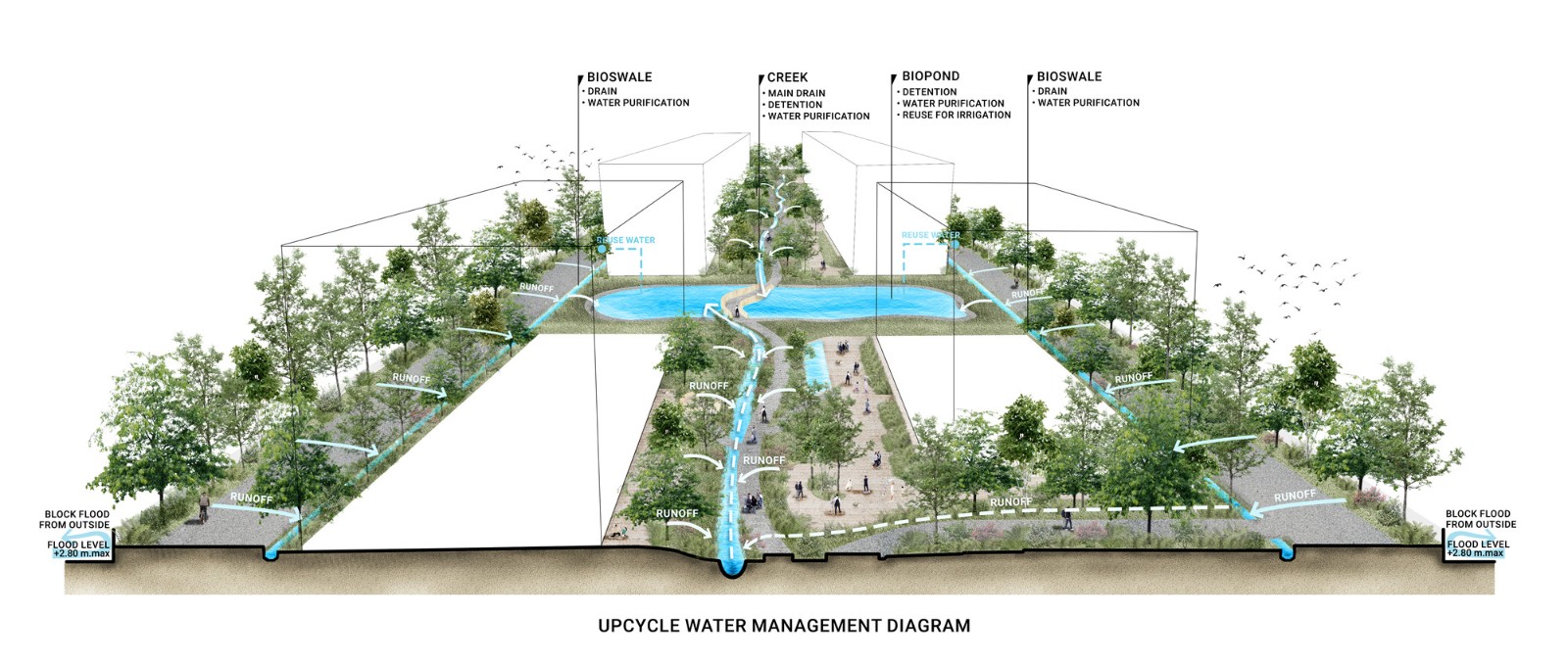
▲循环水管理系统 Upcycle Water management
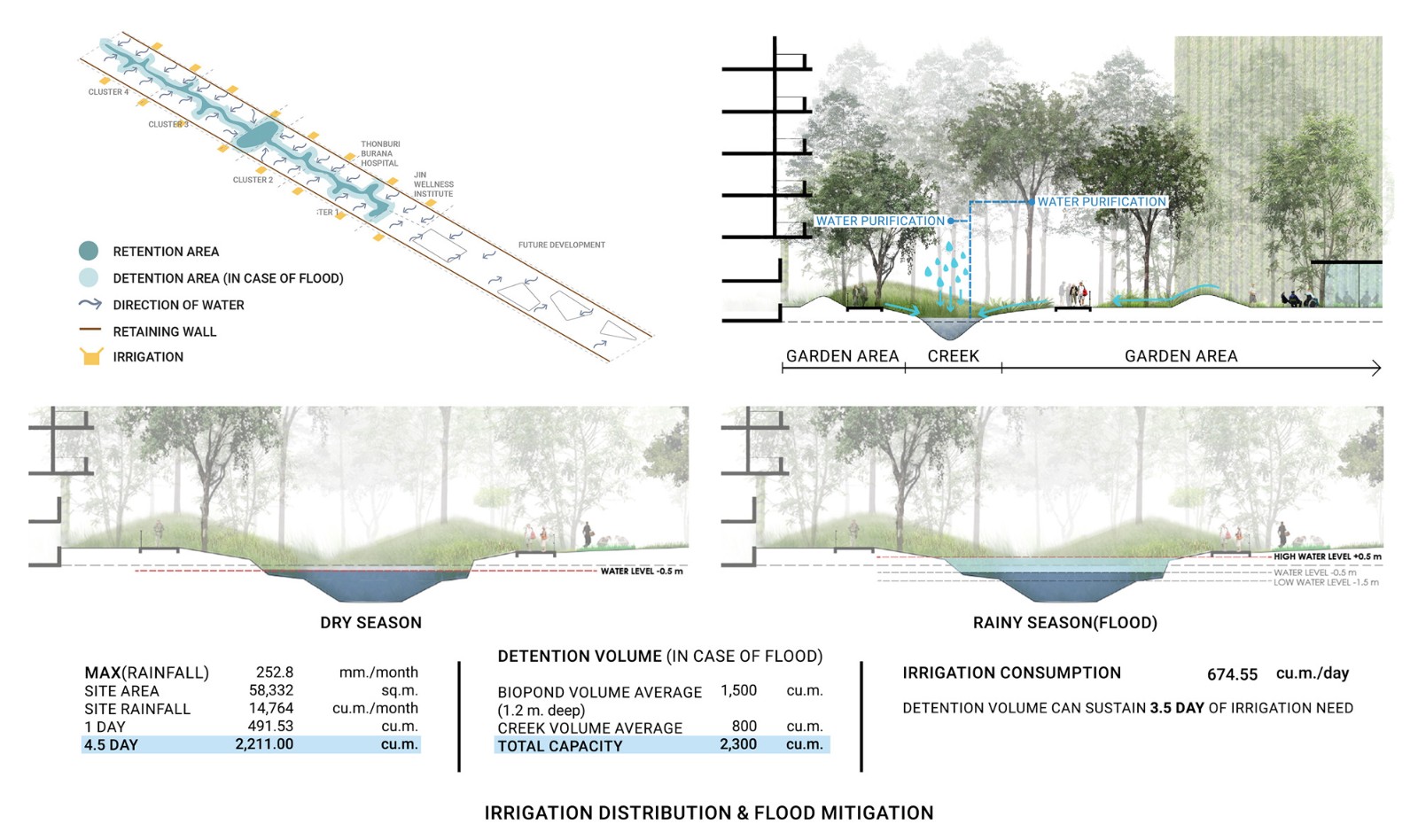
▲灌溉分配与减洪 Irrigation Distribution and Flood Mitigation


▲“溪流”水处理系统 ‘Creek’as a main drainage and treatment system

▲生态池与有机形态桥梁 Aerial view of organic bridge and biopond

▲生物多样化的森林为城市野生动物提供生境 Forest biodiversity as habitat for residents and urban wildlife
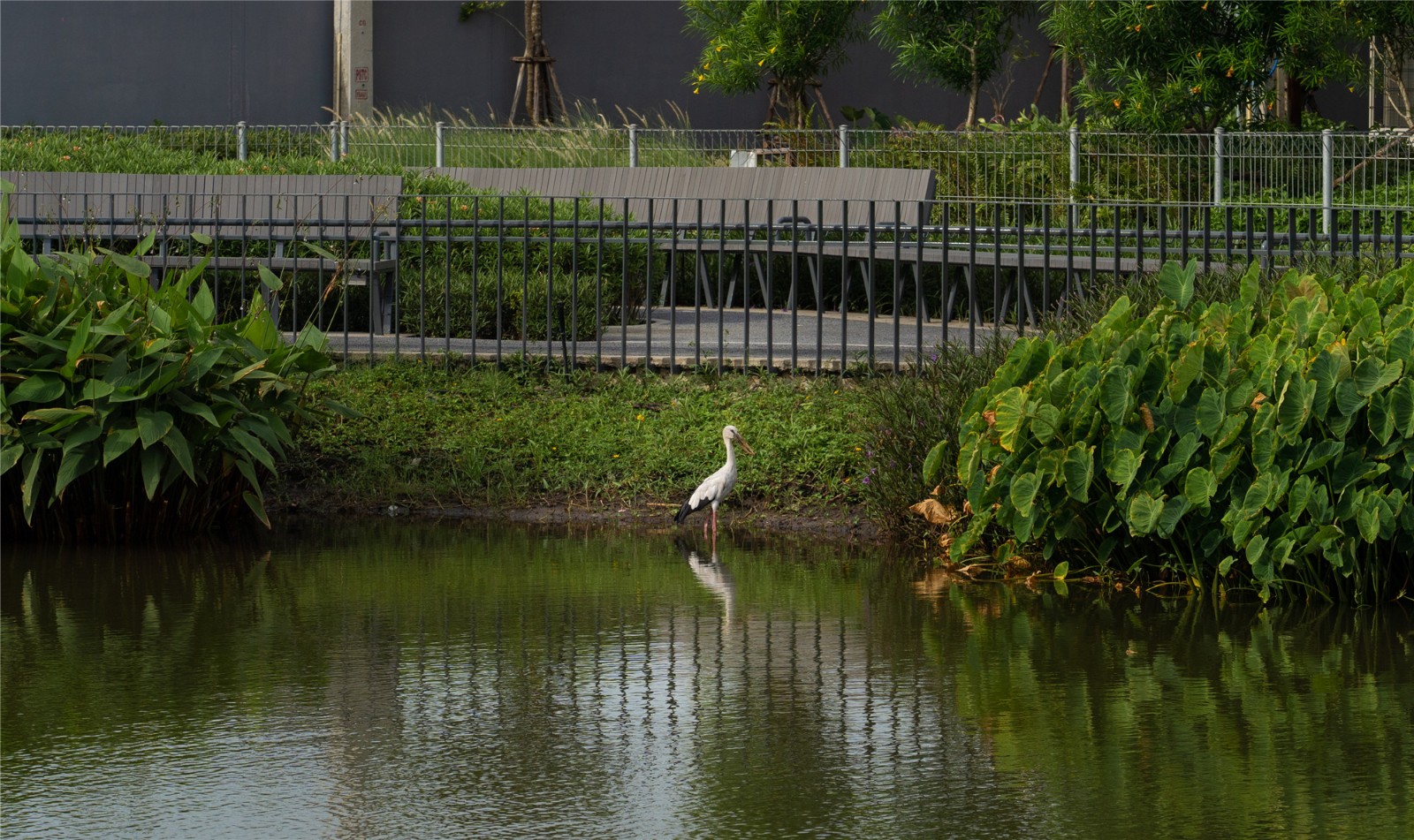
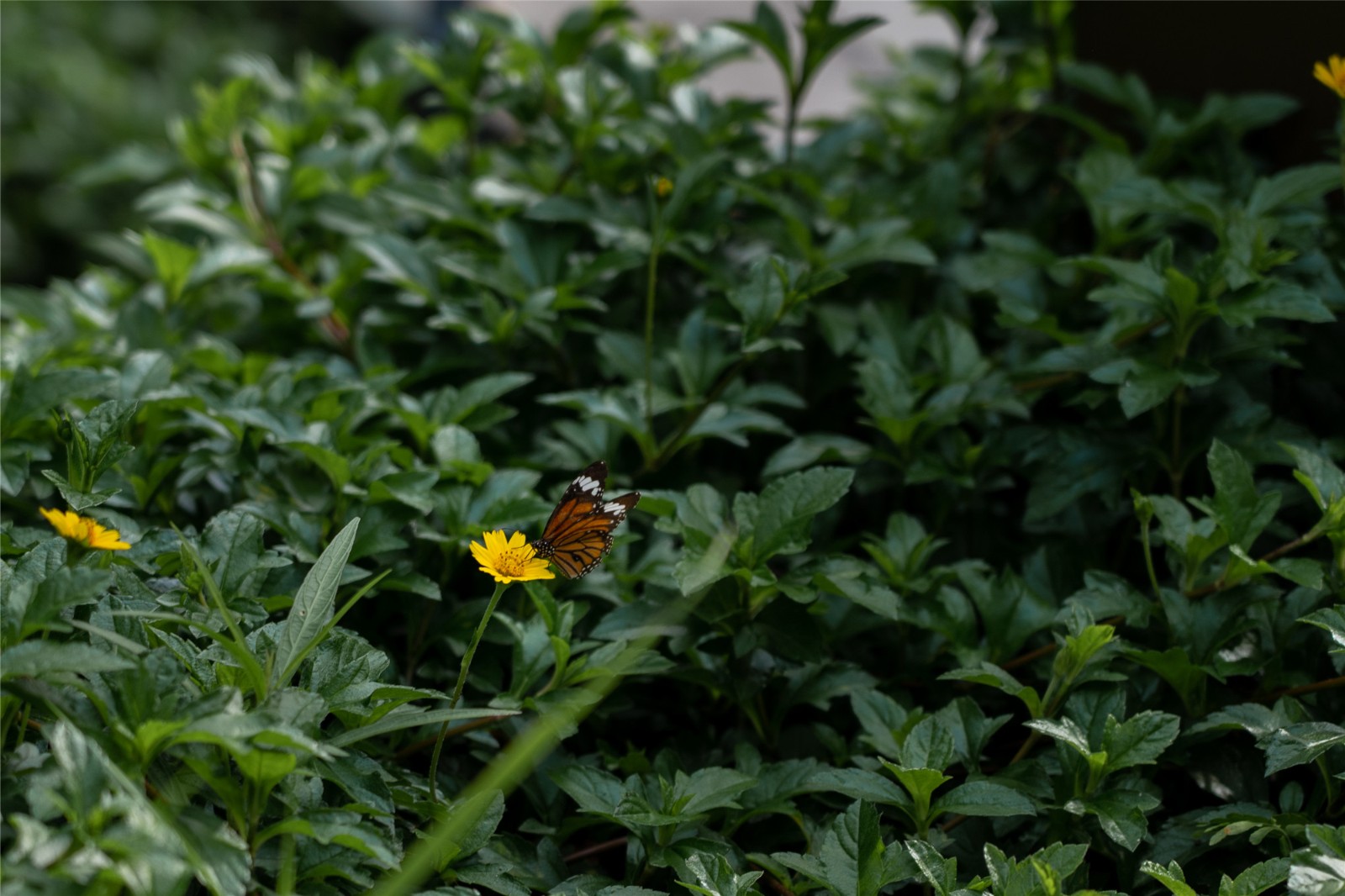
▲场地内的城市野生动物 Urban Wildlife at Jin Wellbeing County
健康体魄
Physical Wellbeing
项目强调“通用化设计”,所有区域均由坡道相连,上下坡处安装扶手,并不另外设置台阶。老年人和残障人士可以安全地在轮椅上使用这些道路,救护车也能够轻松进入。路旁每隔30至50米设有座椅,老年人可以随时停下来休息。地面铺装使用了粗糙的防滑材料,合适的照明为夜间使用提供方便。
As ‘Universal Design’ is another main priority, all programs are connected with ‘All-ramp access,’ sloping up and down with equipped handrails and no additional steps. These pathways allow seniors and handicaps to stroll around safely. Ambulance can also easily pass through during an emergency. Seatings are placed at every 30-50 meters distance along the paths, where elderly can take a rest from time to time. Rough surface materials are used to reduce the risk of slippering, along with adequate lighting for night time usage.

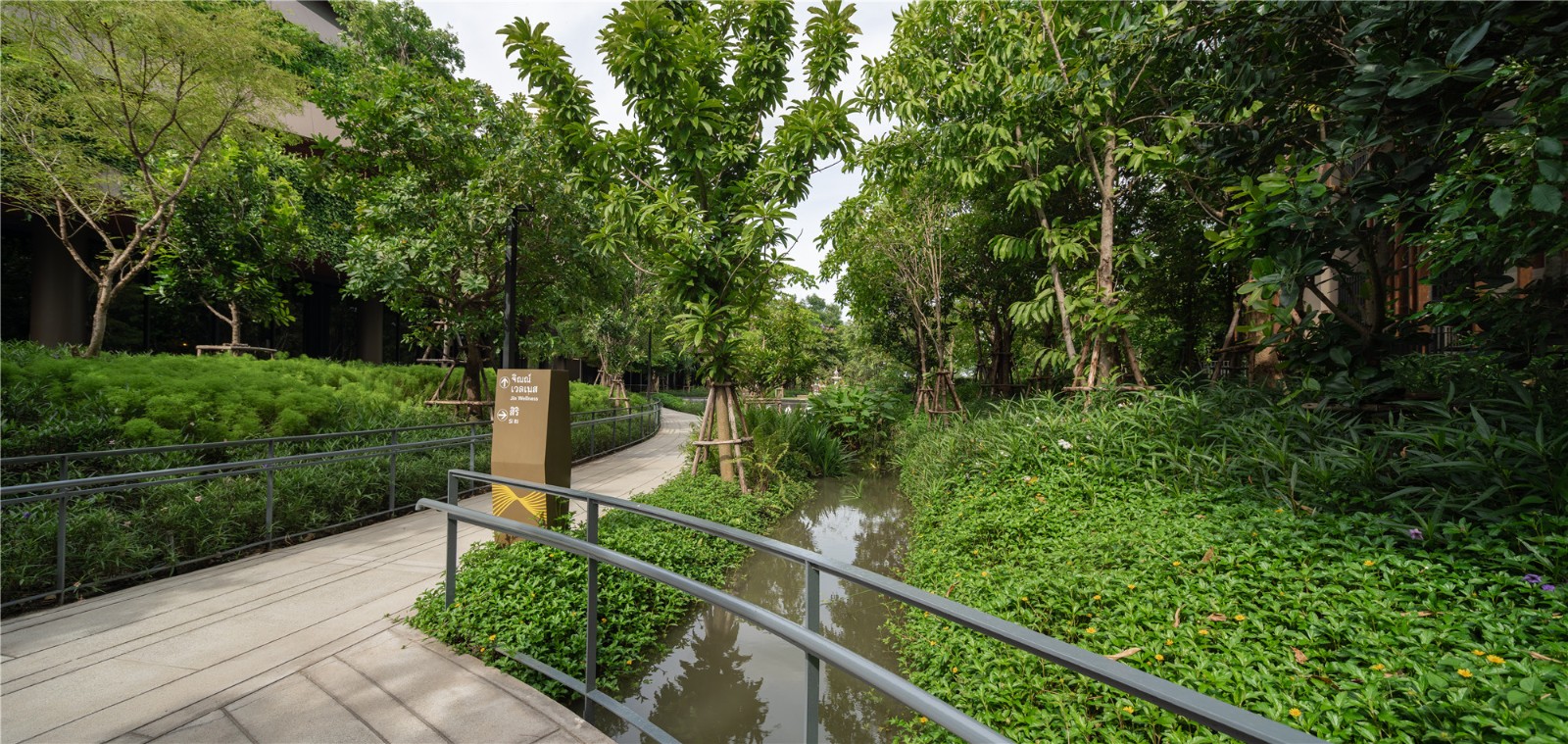
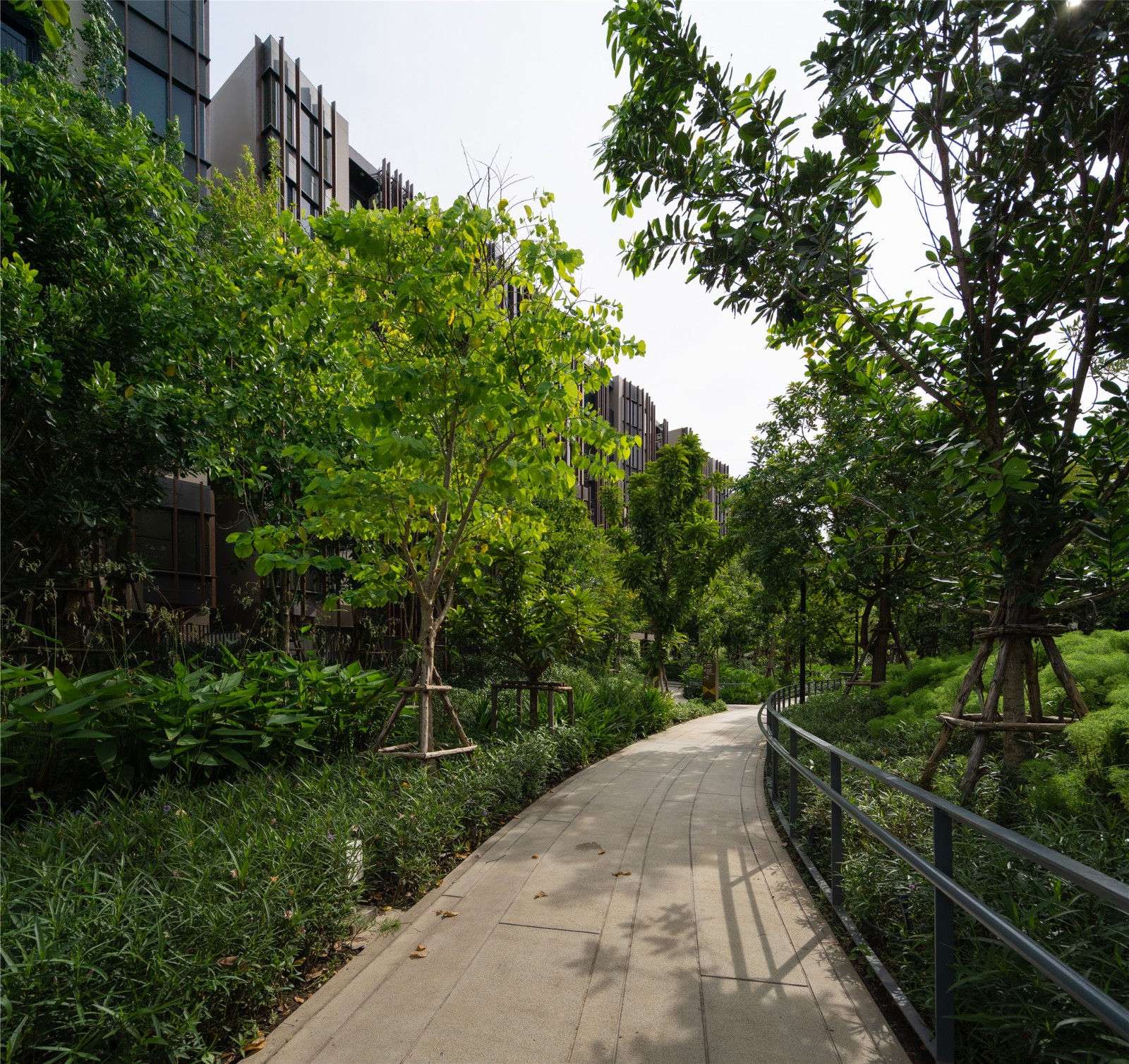
▲贯穿场地的坡道系统 All-ramp access

▲适用于轮椅的无障碍道路系统 Commuting through the lush path
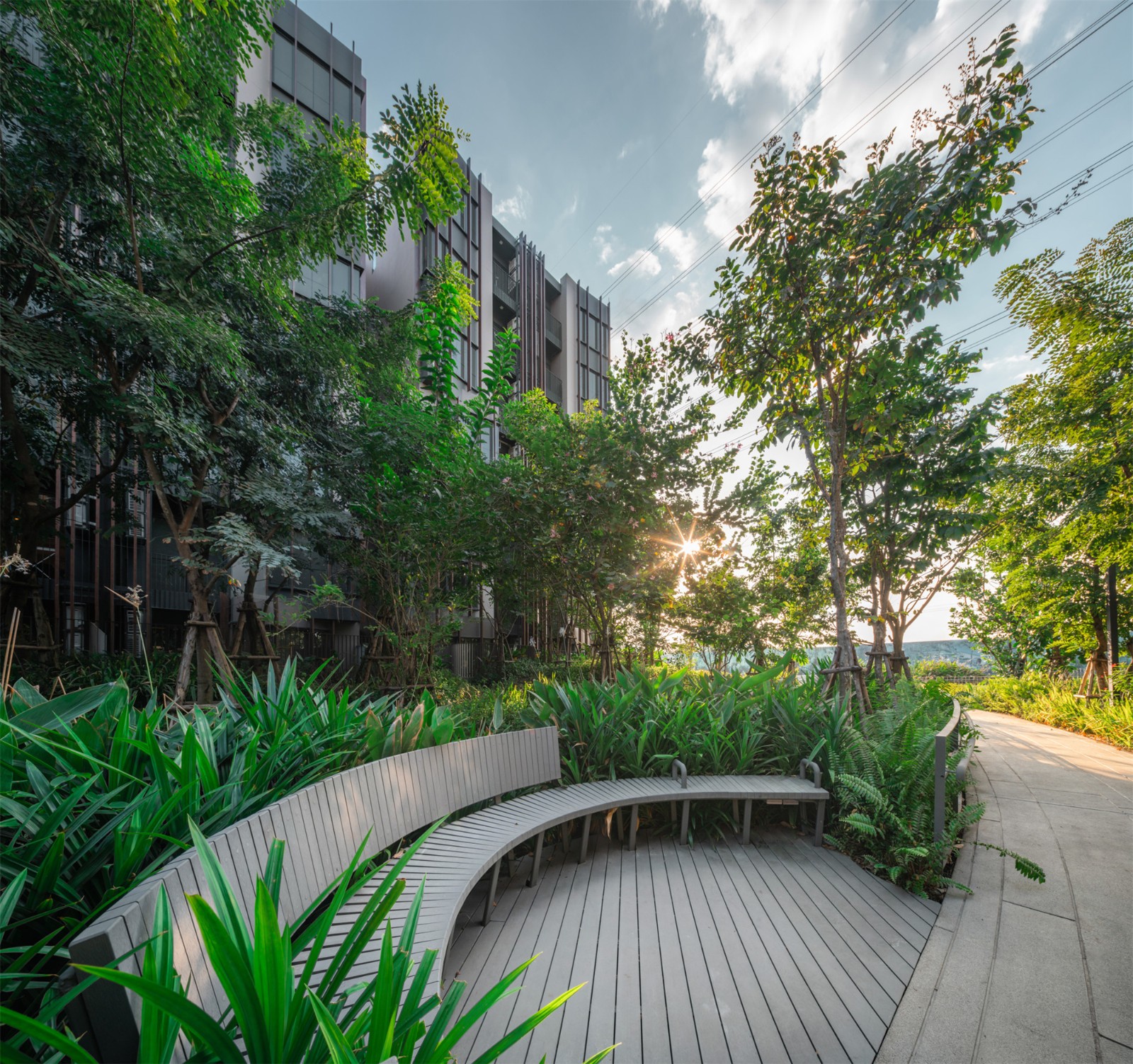
▲每隔30米的休息座椅区 Room Seating Space at every 30 m

▲桥两侧的座椅 seating along the bridge
位于研究所和医院附近的疗愈花园是帮助保持身体健康的一大亮点。它鼓励使用者运用五感——视觉、听觉、味觉、嗅觉和触觉去感受五彩缤纷的芳香植物,以达到整体健康。人们可以在用各种粗糙石块铺成的小路上进行足底按摩。此外还设置了平坦道路、斜坡和台阶三种特别的物理疗法小路,它们都安装了扶手,方便照顾者陪同,也能鼓励使用者重建自己的力量。
The Therapeutic Garden, located nearby Jin Wellness Institute and Thonburi Burana Hospital is one highlight that ensures physical wellness. It encourages users to exercise their five senses - sight, hearing, taste, smell and touch to achieve holistic health, among colorful and fragrant species. Here, doing feet massage is attainable at the reflexology path designed with various sets of rough stones. There are also special trails for physical therapy designed in 3 patterns - flat road, slope path, steps. All are equipped with handrails, allowing caretakers to walk together and encourage them to rebuild their strengths.


▲疗愈花园 Therapeutic Garden
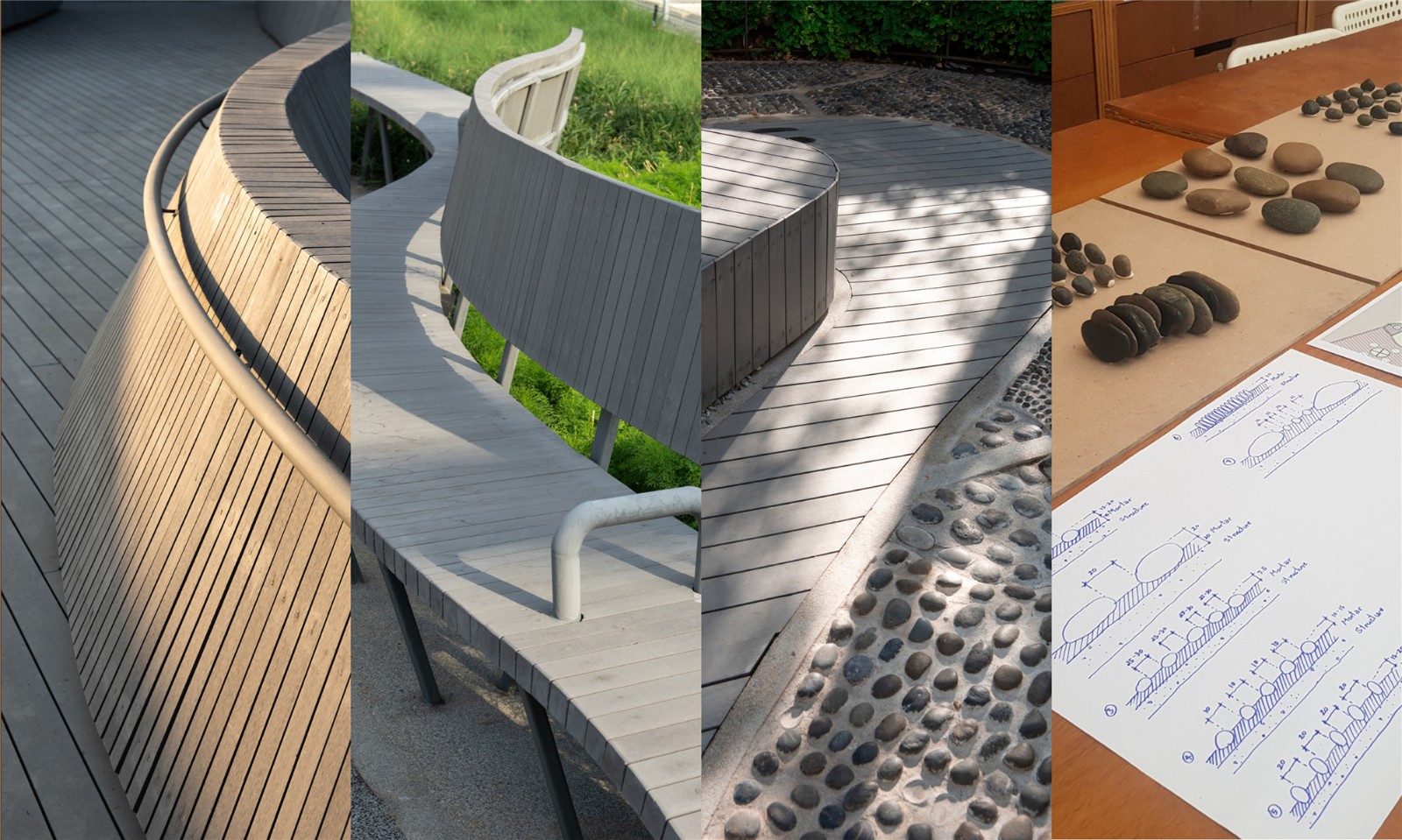
▲材料细节和石块选择 Material Details and Stone experiment process
社区意识
Sense of Community
项目的另一大特点是“多代居”,在这里,完全自理、家庭护理和半自理等多种居住形式相融合,形成充满活力的社区精神。为了提高人们的参与感,设计师强调“让人们相遇”的空间,如运动区和溪流旁的小型聚会空间等,鼓励参与不同活动的人群之间互动。当然,也在绿化中设置了休憩用的私密座椅和隐蔽的户外桌椅。食材花园带来了更多共同用餐或工作的机会,让人们实现终身学习。
“Multi-generation living” is another key feature, where independent living, family, and assisted living are united to build community spirit with activity dynamics. In order to ‘engage,’ space planning is designed to add a ‘chance of meeting,’ encouraging cross activity interaction such as exercise area and enclaves of gathering spots along the creek. Yet, there are also private seating niches and secluded outdoor tables among greenery, offering a sense of ‘retreat.’ After all, an edible garden allows to ‘create’ some dining and workshop together, leading to lifelong learning.

▲为多代居社区带来丰富的活动 Creating Activity Dynamics for Multi-generation

▲用于工作坊的桌子 Workshop Table
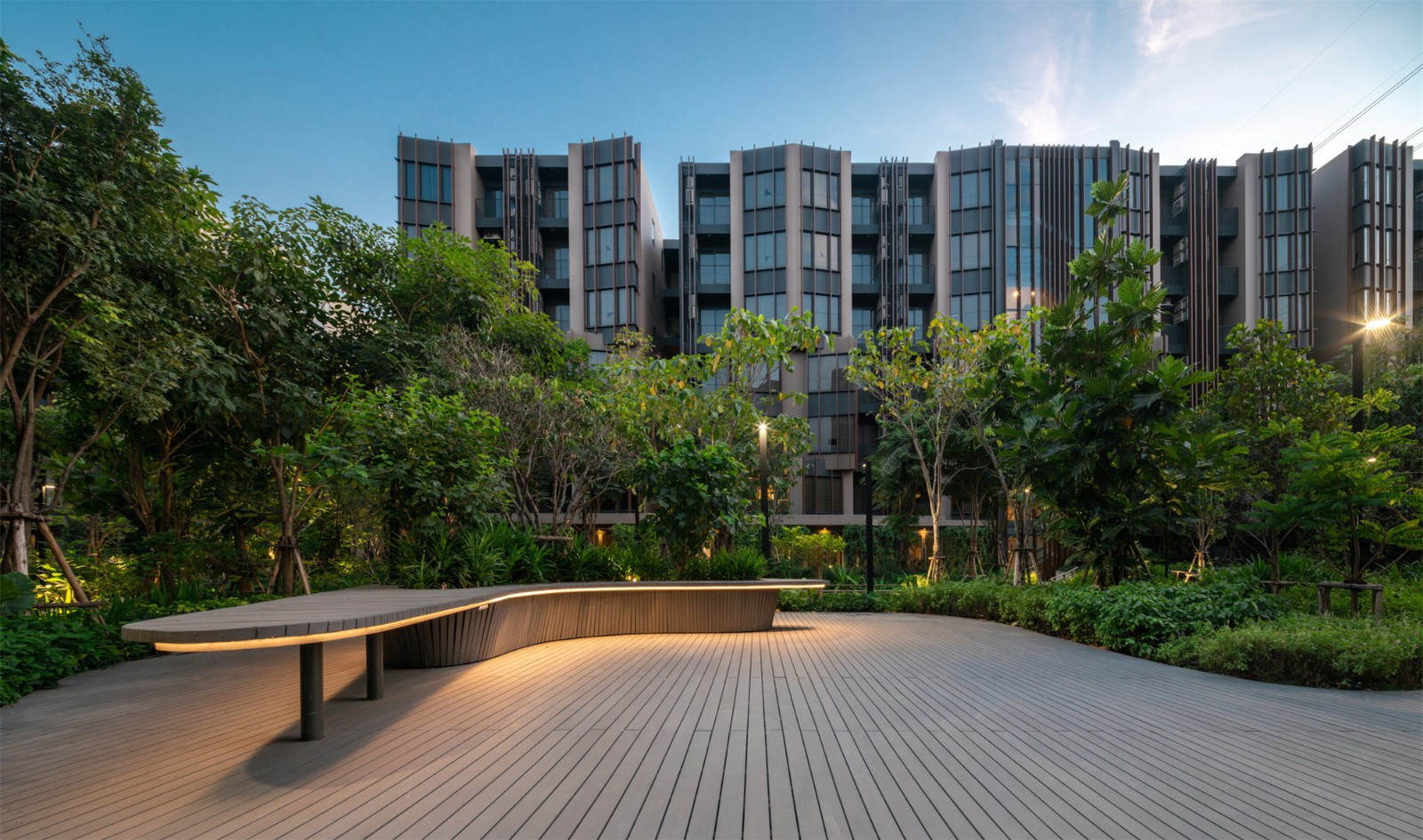
▲食材花园 Edible Garden
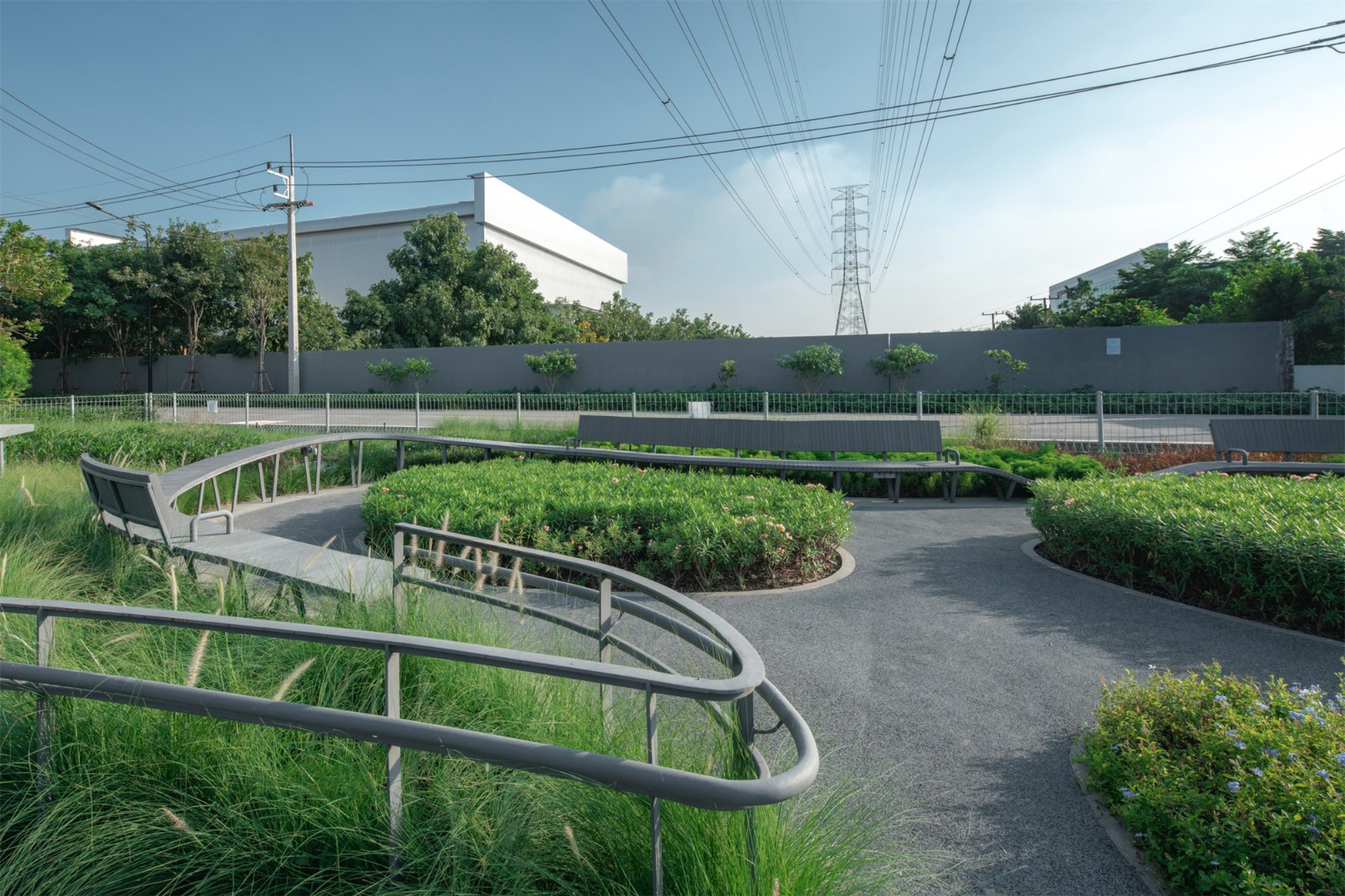
▲装有扶手的休憩花园 Relax Garden with handrails

▲花园中的座椅 Seating details in the garden
此外,金钥匙幸福研究中心前有带来湿润森林感的叠水景观、可用于集体活动的草坪和游泳池等,人们可以在这里游憩,也可以沿着场地内慢跑道跑步。研究中心二楼设有标准泳池、水疗池、冷热浴池和泳池平台,可满足不同需求和生活方式。
Moreover, in front of Jin Wellness Institute are the cascade, offering moisturized forest atmosphere, green lawn and swimming pool for group exercise, where people can enjoy taking time, as well as running along the site’s jogging track. Likewise, at the 2nd floor, there are meters standard lap pool, hydrotherapy pool, hot-cold tub and pool deck, suitable for different needs and lifestyles.


▲研究中心门前的叠水景观 View of frontal cascade
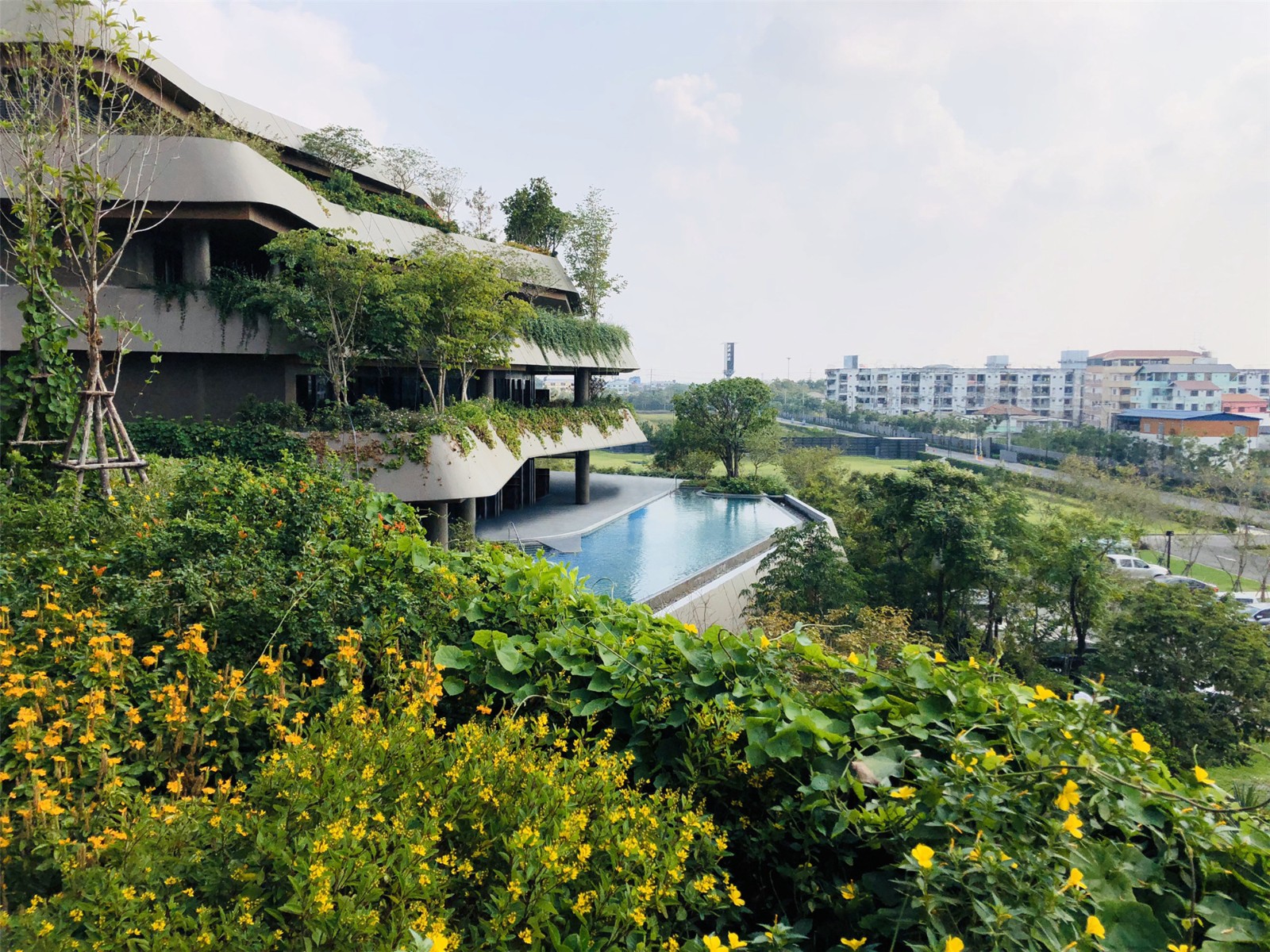
▲研究中心二层的游泳池 Swimming pool at the 2nd floor of Jin Wellness Institute
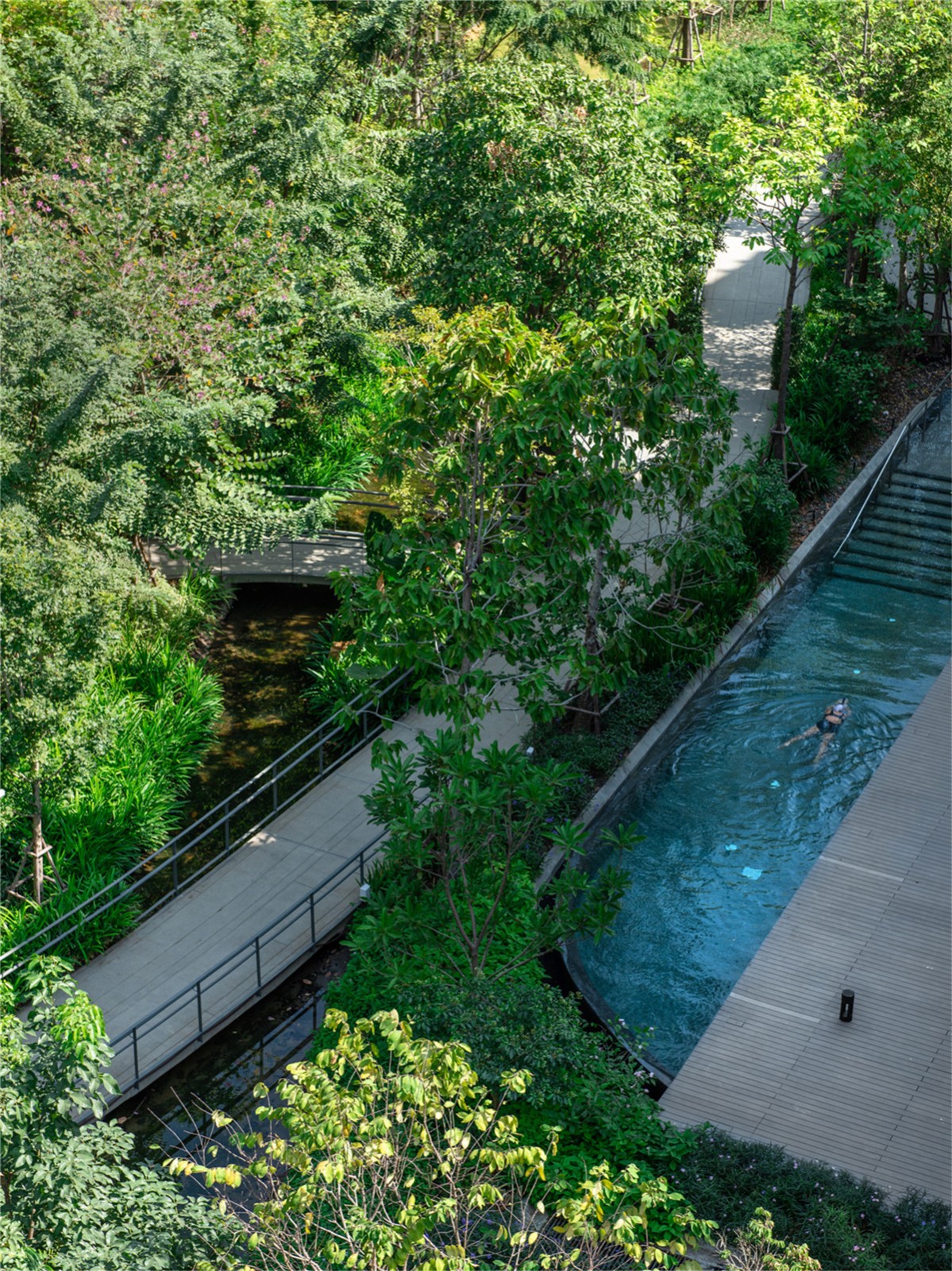
▲绿荫环绕的泳池 Exercising in the pool amidst greenery
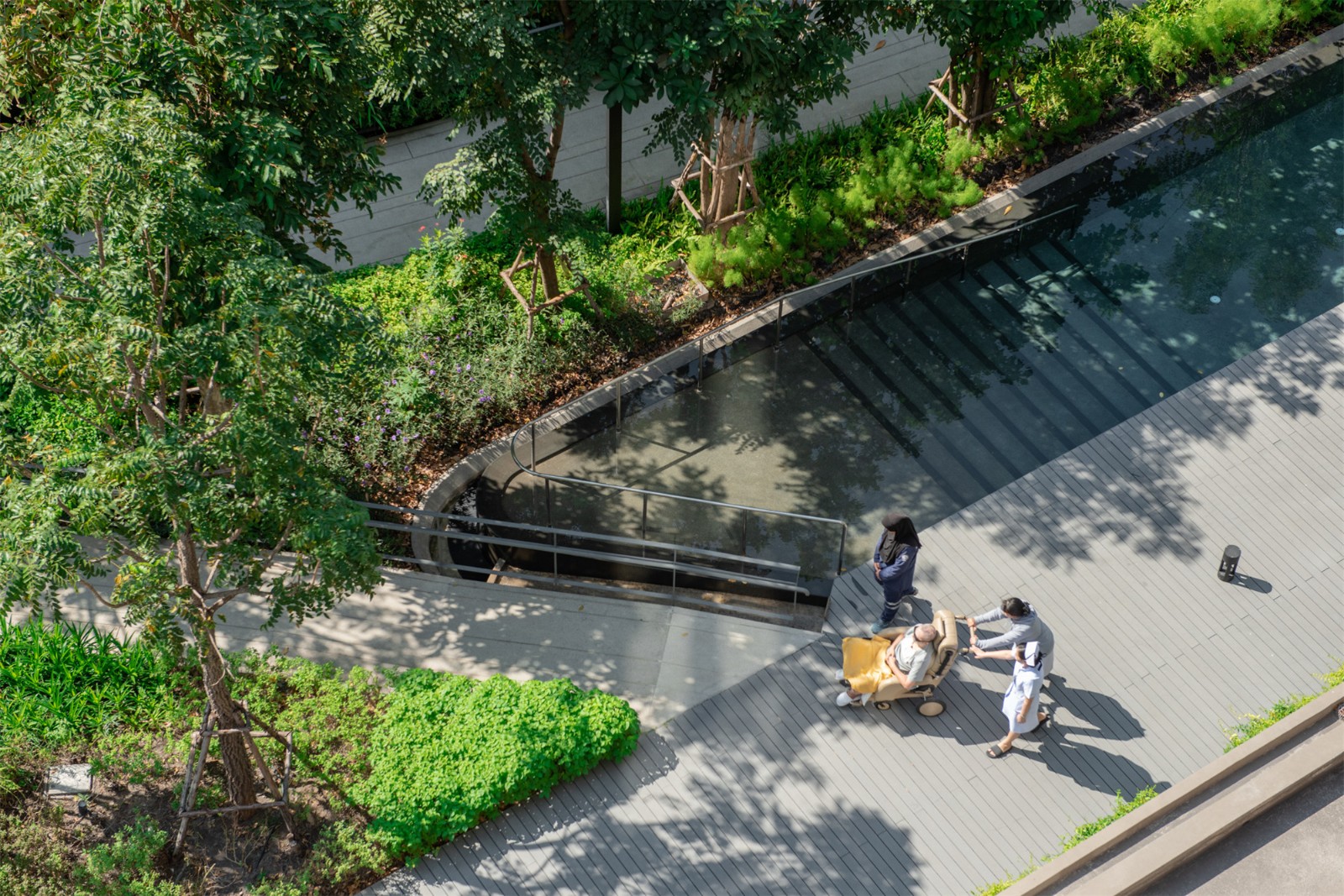
▲通往泳池的小路 Paths and guiding railings into the pool
金钥匙幸福小镇是一个充满宁静和多代居精神的生活综合体,与自然和谐相处、维护生物多样性的高品质生活社区。
To conclude, Jin Wellbeing County surely is a living complex full of serenity and multi-generation spirit amidst a seamless harmony with nature and biodiversity, flourishing good quality of life.

▲小镇内的游憩步道 Wandering paths through Jin Wellbeing

▲生态池上的步行桥 Access bridge over Biopond

▲疗愈花园 Therapeutic Garden
项目概况
委托方:Thonburi Healthcare Group
建筑设计:Openbox Architects co., ltd.
室内设计:PIA Interior co., ltd., Fine Dec co., ltd.
机电工程:Mitr Technical Consultant co., ltd.
土木工程:Wisit Engineering Consultant co., ltd.
软质景观:Contractor: MJ Gardens
项目类型:混合
完成时间:2020
设计时间:2016-2020
总建筑面积:58,332平方米(第一阶段)
项目地址:泰国巴吞他尼府Rangsit市
摄影师:Panoramic Studio, Napon Jaturapuchapornpong
发表评论
热门评论



